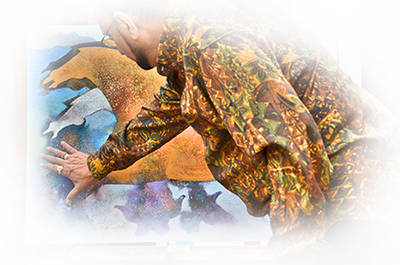Translate This Page
The Darji story
Originally from India, Ramesh Darji enrolled in the Art Academy of Mumbai and graduated in 1970 with a gold medal. He went on to teach art for a year, before spending the next ten years as a graphic designer for the prestigious Intercontinental Taj group of hotels.
He introduced his original style in 1982 which he called a Touch of Class; this brought his first exhibition in India which sold out in just four days, elevating his sublimely individual style to become nationally renowned. His Indian period works are a rendition of forms without contrived design; the black line upon the white used in hatches, in swirls, in building up of complex textures which perfectly captures the bright colours of the people of India, their vivid engagement with life and the power of their emotional responses. The black and white style, with a touch of colour, is unique for Indian art and gained great notoriety in the country and internationally.
In a brief departure from graphics, Darji lent his talents to the direction of Bollywood cinema before meeting his wife Paula.
In 1989, Darji moved to the Netherlands following marriage. The new environment and audience brought with it a new style and era to his art. A radical departure from black and white to full colour in a cubistic style, these paintings with their rich, vibrant colours and bold flowing lines have been likened to stained glass windows and often carry a symbolic message.
"There is so much to receive and so much to give."
"I give life to the colours and the colours give me the strength to go on."
- Ramesh Darji
Having achieved great success in the Netherlands, with paintings being purchased by private collectors and corporate clients alike, Darji moved to England in 1998 with his wife and two daughters, Nuneeta and Faresha.
Again taking inspiration from his surroundings, the English period paintings take on a a new freedom in forms, with soft edges, areas of rich colour and rough textures which add a sense of life and movement. Contact with the thriving Asian community in England had caused Darji to return to his roots. His Fusion works gave birth to a coming together of Eastern and Western streams of work.
The Darji Expression passes to Darji's youngest daughter and her partner to continue the legacy.
